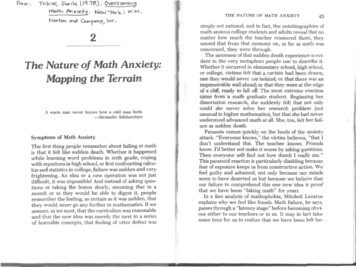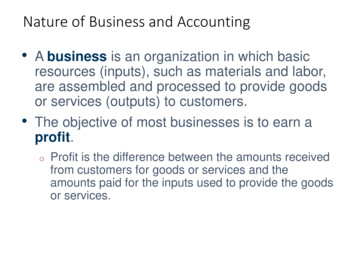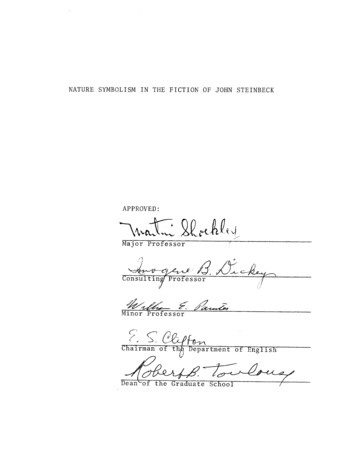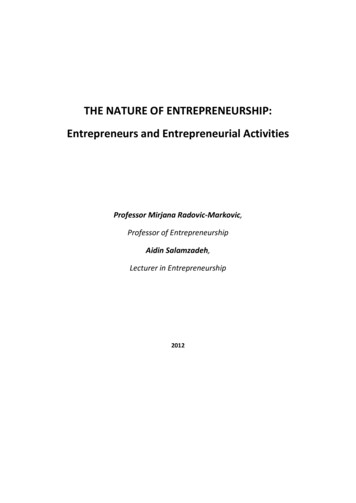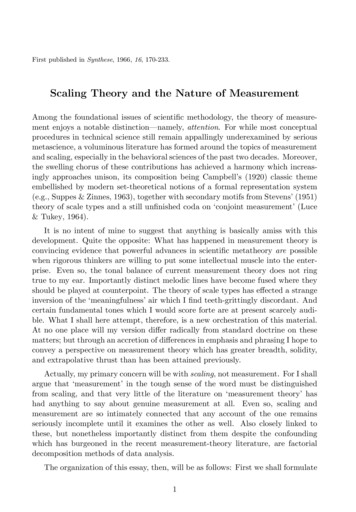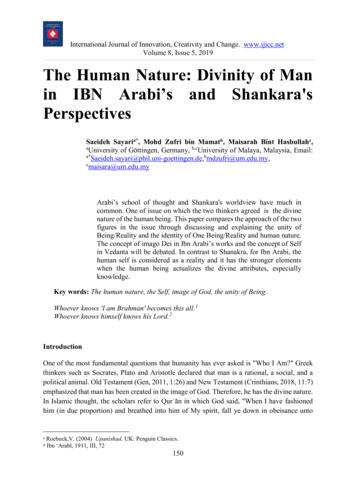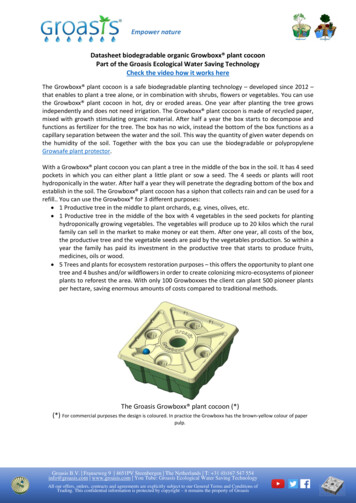
Transcription
Nature' s answer echinaceaNext
Nature' s answer echinacea
Nature's answer echinacea. Nature's answer echinacea and goldenseal. Nature's answer echinacea extract. Nature's answer echinacea & goldenseal vegetarian capsules 90-count. Nature's answer echinacea capsules. Nature's answer echinacea & astragalus. Nature's answer echinacea drops. Nature's answer echinacea root.Image not available to take: To view this video Download Flash Player with up to 3,000 lines available, we offer quick and reliable deliveries throughout Australia and internationally. When you buy from us, you can always expect a quick, friendly and friendly service Customized. Our specialized personnel understand what good customer servicemeans. When you call us, you can talk to a real person, not with a car. If you have a request regarding your order. You get the necessary personal attention to find the answer as quickly as possible. Your health is important to us, we do not see the time to help you reach the healthy lifestyle that you deserve, through functional foods and nutritionalsupplements. We sincerely like you to go shopping with us and share your experience with the Your family and friends. Ricorda:  «Preventing is better than cure.â This page was divided into two parts. This, the first, examines the numbers of Fibonacci and because they appear in various â "family trees" and patterns of leaves and seeds spirals.The second page then examines why the golden section is used by nature in some details, including the animations of growing plants. This page index The icon indicates that there is a section â â â â â â â â â â â â â â â â â â â â â â â â â â â â â â â â â â â â â â â â â â â â «You Make Mathematics» . of questions to start your investigations. 0, 1, 1, 2,3, 5, 8, 13, 21, 34, 55, 89, 144, 233, 377, 610, 987 . more . Rabbits, cows and bees of genealogical trees We give a Look first at the Rabbit puzzle of which Fibonacci wrote and then to two adaptations to make it more realistic. This introduces you to the series of Fibonacci numbers and to the simple definition of the entire infinite series. Fibonaccirabbits The original problem investigated by Fibonacci (in the year 1202) concerned the speed with which rabbits could reproduce in ideal conditions. Suppose a pair of newborn rabbits, a male and a female, put in a field. Rabbits are able to mate at the age of one month, so at the end of the second month a female can produce another pair of rabbits.Suppose our rabbits do notand that the female always produces a new couple (a male, a female) every month from the second month onwards. The puzzle Fibonacci posed was. How many couples will there be in a year? At the end of the first month, they mate, but there is only one couple left. At the end of the second month the female produces anew pair, so now there are two pairs of rabbits in the field. At the end of the third month, the original female produces a second pair, making three pairs across the field. At the end of the fourth month, the original female produced another new pair, the female born two months ago also produces her first pair, making five pairs. The number of pairs ofrabbits in the field at the beginning of each month is 1, 1, 2, 3, 5, 8, 13, 21, 34,. Can you see how the series is formed and how it goes on? If not, look at the answer! The first 300-digits of Fibonacci are here and some questions to answer. Now you can understand why is this the answer to the problem of our rabbits? If not, that's why. Another viewof the rabbit family tree: both diagrams above represent the same information. The rabbits have been numbered to allow comparisons and to count them as follows: All rabbits born in the same month are of the same generation and are at the same level as the tree. The rabbits have been numbered so that in the same generation the new rabbits arenumbered in the order of their parent number. Thus 5, 6 and 7 are the children of 0, 1 and 2 respectively. The rabbits labeled with a number of Fibonacci are the children of the original rabbit (0) at the top of the tree. There are a number of Fibonacci new rabbits in each generation, marked with a dot. There are a number of Fibonacci rabbits in totalfrom the top to any generation. There are many other interesting mathematical properties of this tree that are explored in the following pages on this site. 0, 1, 1, 2, 3, 5, 8, 13, 21, 34, 55, 89, 144, 610, 987. More. The problem with rabbits is not It’s realistic, isn’t it? It seems to suggest that brother and sisters mate, which, genetically, leads toproblems. We can get around this by saying that the female of each pair mates with any male and produces another pair. Another problem that is still not true for life, is that every birth is of exactly two rabbits, a male and a female. Dudeney’s Cows The English pusrlist, Henry E Dudeney (1857 – 1930, pronounced Dude-Knee) wrote several excellentpuzzle books (see after this section). In one of them fits the rabbits of Fibonacci to the cows, making the problem more realistic in the way we looked at above. He gets around the problems by noting that in fact, it’s only the women who are interesting – um- I mean the number of women! He changes months into years and rabbits into bulls (males)and cows (females) in the problem to 175 in his book 536 Enigmas and Curious Problems (1967, Souvenir print): If a cow produces its first calf of two years age and after it produces another single calf each year, how many calves of her are there after twelve years, assuming no one die? This is a better simplification of the problem and rather realisticnow. But Fibonacci does what mathematicians often do at the beginning, simplifies the problem and sees what happens – and the series that bears his name has a lot of other interesting and practical applications as we see later. Let’s see another real situation that is exactly modeled by the Fibonacci series. Publication books of Henry E DudemeyAmusements in Mathematics, Dover Press, 1958, 250 pages. Still in print thanks to Dover in a very robust paper format at an incredibly low price. This is a wonderful collection that I often find diving into. There are arithmetic puzzles, geometric puzzles, chess patterns, a great chapter on all kinds of mazes and solve them, magic squares, rivercrossing puzzles, and more, everything complete solutions and often known extra! Highly recommended! 536 Puzzles and Curious Curious It is now out of print, but you may be able to grab a second-hand version by clicking on this link. It is another collection like Functions in Mathematics (above) but it contains several puzzles organized intosections: arithmetic and algebraic puzzles, geometric puzzles, combinator and topological puzzles, puzzle games, domino puzzles, puzzle matches and “unclassified” puzzles. Complete solutions and index. A real treasure. The Canterbury Puzzles, Dover 2002, 256 pages. Other puzzles (not in previous books) the first section with some characters fromChaucer’s Canterbury tales and other sections about the monks of Riddlewell, the Knight’s Christmas party, the teachers' puzzles and so on and all of course with complete solutions! Honeybees and family trees There are over 30,000 species of bees, and in most of them the bees live solitary. What most of us know best is the bee, and strangely, theylive in a colony called the hive and have an unusual family tree. In fact, honey bees have many peculiarities and in this section we will show how Fibonacci numbers count the ancestors of a “ape” (in this section “ape” means “bee”). First, some unusual facts about honey bees like: not all have two parents! In a colony of bees there is a special femalecalled queen. There are many worker bees that are also female but, unlike queen bees, they do not produce eggs. There are some drone bees that are male and do not work. Males are born from the queen’s unfertilized eggs, so male bees have only one mother and no father! All females are born when the queen has mated with a male and thus havetwo parents. Females usually end up as worker bees, but some are fed a special substance called royal jelly that makes them grow into queens ready to leave to start a new colony when the bees form a new colony. and leave their home (a hive) looking for a place to build a new nest. So female bees have two parents, a male and a female. Male beeshave only one parent, one female. Here we follow the Family Trees convention that parents appear above their children, so the last generations are at the bottom and the higher we go, the older people are. These trees show all the ancestors (predecessors, antecedents) of the person at the bottom of the diagram. We would get a very different tree ifwe listed all the descendants (offspring, offspring) of a person as we did in the rabbit problem, where we showed all the descendants of the original pair. Let’s look at the family tree of a male bee. He had one parent, one female. She has two grandparents since her mother had two parents, a boy and a girl. She has three great-grandparents: hergrandmother had two parents, but her grandfather had only one. How many grandparents have you had? Once again we see the Fibonacci numbers: big, big, big gt,gt, grand- grand Number of parents: parents: parents: parents: of a bee MALE: 1 2 3 5 8 of a bee FEMALE: 2 3 5 8 13 The Fibonacci Sequence as it appears in Nature from S.L. Basin toFibonacci Quarter Terly, vol. 1 (1963), pp. 53-57. 0, 1, 2, 3, 5, 8, 13, 21, 34, 55, 144, 23. You do the math. Make a diagram of your family tree. Ask your parents and grandparents and older relatives, because each of them can tell you about particular parts of your family tree that they didn’t know. It can be very fun to try to see how far you can go. Ifyou have put old photos of relatives on a large graph of your tree (or use photocopies of the photos if your relatives want to keep the originals). If you like, include the year and place of birth and death and also the dates of any marriage. A brother or sister is the name of someone who has the same two parents as you. What’s a half-brother and a halfsister? Do you describe a cousin but use simpler words like brother, sister, parent, son? Do same for grandchildren and grandchildren. What? What? A second cousin? What do we mean by a brother-in-law, mother-in-law, mother-in-law, mother-in-law, etc.? Big and great for your relatives or your parents. So a great father is a father of a parent of yourand your great aunt or great aunt is the name given to an aunt of your parents. Make a diagram of family tree names so that "I" is at the bottom and "Mom" and "Dad" are above you. Mark in "brother", "sister", "uncle", "grandson" and like many other names of (types of) relatives you know. It doesn't matter if you don't have any brothers or sisters orgrandchildren because The diagram is intended to show the relationships and their names. If you have a friend who speaks a foreign language, ask them what words they use for these relationships. What is the name for the wife of a parent's brother? Do you use a different name for your parents'sister? In laurga these two are sometimes differentbecause one is your relative of blood and the other is not, just a relative through marriage. What do you think its blood is and what relationship because of the marriage? How many parents does everybody have? So how many big parents are you gonna have to make room in your family tree? Each of them also had two parents, so how many of yourneedy parents will be in your tree? And how many great grandparents? What is the model in this series of numbers? If you return one generation to your parents, and two to your grandparents, how many inscriptions will there be five generations ago in your tree? And how many ten generations ago? The family tree of humans involves a differentsequence for the number of fibonacci. What's this sequence called? Looking at your answers to the previous question, your friend Dee Duckshun tells you you have two parents. Everyone has two parents, so it's four big parents you have. They also had two parents who make eight great-grandparents in total. and 16 Great-Great-Grand-Parents. andso on. So the further back you go into your There’s more people. It is the same for the Family Tree of all who live in the world today. It shows that the further back in time we go, the more people there must have been. So it is a logical deduction that the world’s population must be smaller and smaller with the passage of time! Is there a mistake inDee’s argument? If so, what is it? Ask your math teacher or a parent if you’re not sure of the answer! 0, 1, 1, 2, 3, 5, 8, 13, 21, 34, 55, 89, 144, 233, 377, 610, 987. Again. Fibonacci Numbers and Gold Ratio If we take the ratio of two successive numbers in the Fibonacci series, (1, 1, 2, 3, 5, 8, 13,.) and divide each by the number before it, we will findthe following set of numbers: 1/1 1.194; 2/1 2.194; 3/160; 3 160; 3/2 1ä ä 5/3 1., Þы à 8/5 1Þы ,à 194; 160; 13/8 1e ;625,194; 21/13 1 . It’s easier to see what’s happening if you print the ratios on a graph: the ratio seems to be set to a particular value, which we call the golden ratio or the golden number. It has a value ofabout 1183; 618 034, although we will find an even more accurate value on a later page [this link opens a new window]. You do math. What happens if we take the ratios from the other side, that is, we divide each number by the following: 1/1, 1/2, 2/3, 3/5, 5/8, 8/13,.? Use your calculator and maybe print a graph of these ratios and see if somethingsimilar happens to the graph above. You will have identified a key property of this ratio when you find the limit value of the new series! 0, 1, 1, 2, 3, 5, 8, 13, 21, 34, 55, 89, 144, 233, 377, 610, 987. Again. The gold ratio 1183; 618 034 is also called the gold section or the golden mean or just the gold number. It is often represented by a Greek letterPhi. The closely correlated value we write as phi with a little “p” is just the decimal part of Phi, it’s equal to 0K 183? 618034. Fibonacci Rectang and Spirals Shell We can make another image that shows The Fibonacci numbers are 1,1,2,3,5,8,13,21, if we start with two small squares of size 1 next to each other. Draw a square of size 2 ( 1 1) on bothsides. Now we can draw a new square â by touching both a unit square and the last square of side 2 â so that we have long sides 3 units; and then another one that touches both square 2 and square 3. (which has sides of 5 units). We can keep adding squares around the image, each new square has a side that is as long as the sum of the sides of thelast two squares. This set of rectangles whose sides are two successive Fibonacci numbers in length and which are composed of squares with sides that are Fibonacci numbers, we will call Fibonacci rectangles. Here’s a spiral drawn in squares, a quarter of a circle in every square. The spiral is not a real mathematical spiral (because it consists offragments that are parts of circles and do not shrink anymore), but it is a good approximation of a kind of spiral that often appears in nature. Such spirals are observed in the form of shells of snails and sea shells and, as we will see later, also in the arrangement of seeds on flowering plants. The spiral in squares makes a line from the center of thespiral increases by a factor of the golden number of each square. So the points on the spiral are 1,618 times further from the center after a quarter turn. On a full lap, the points of a radius out of the centre are 1.6184 6.854 times further than when the curve crossed the same radial line for the last time. Cundy and Rollett (Mathematical Models,Second Edition 1961, p. 70) state that this spiral occurs in snail shells and peaks, referring to Dâ Arcy Thompson’s book on Growth and Form which probably means Chapter 6 “The Equiangular Spiral”. Here Thompson talks about a spiral class with a constant expansion factor a central line and not only shells with a Phi expansion factor. The followingare pictures of the cross sections of a Nautilus shell. Show the curve of the shell and the inner chambers which the animal uses it adds as it grows. The rooms provide floating in the water. Click on the image to enlarge it in a new window. Draw a line from the center to the outside in any direction and find two points where the shell crosses it so thatthe spiral of the shell rotated only once between them. The external crossing point will be about 1.6 times further from the center of the next inner point on the line where the shell crosses it. This shows that the shell has grown of a factor of the golden ratio at once. In the poster shown here, this factor varies from 1.6 to 1.9 and can be due to the factthat the shell has not been cut exactly along a central plane to produce the cross section. Several organizations and companies have a logo based on this design, using the spiral of the Fibonacci squares and sometimes with the overlapping Nautilus shell. It is not correct to say that it is a Phi-spiral. First, the “spiral” is only a approximation as itconsists of separate and distinct circle quarters; second the (real) spiral increases by one factor Phi every quarter, so it is more correct to call it Phi4 spiral. Here are some more posters available from AllPosters.com that are great for your study wall or classroom or to go with a scientific project. Click on the images to enlarge them in a new window.The curve of this shell is called Equiangular or Logarithmic spirals and are of a common nature, although the growth factor is not always the golden ratio. The curves of life Theodore A Cook, books of Dover, 1979, ISBN 0 486 23 701 X. A reprint of Dover of a classic book 1914. 0, 1, 2, 3, 5, 8, 13, 21, 34, 55, 89, 144, 233, 377, 610, 987 .More.Fibonacci numbers, aurea section and plants A plant in particular shows the numbers of FibonacciNumber of  «Points of growth» which owns. Suppose that when a plant pulls out a new bud, that sprout must grow two months before it is strong enough to support branching. If you branch every every one after that at the point of growth, we have thephoto shown here. a plant that grows much like this is the "sneezing ointment:" ptarmic achillea. 0, 1, 1, 2, 3, 5, 8, 13, 21, 34, 55, 89, 144, 233, 377, 610, 987. flowers, fruits and leaves on many plants, the number of petals is a number of flanneurs: butter cups have 5 petals; lili and iris have petals 3; some delphinium have 8; corn marigolds have 13petals; some asteries have 21 while daisies can be found with petals 34, 55 or even 89. links here are at various catalogs of flowers and plants: the Dutch searchable index Flowerweb called Flowerase. the American database of agricultural plants containing more than 1000 images, information on plants and databases available. fuchsia pinks lilydaisiees is available as poster of allposters. 3 petals: lily, iris â 160; â 194; 194; 194; mark taylor (Australia,) a hemerocallis and lilium grower (lilies) emphasizes that although these seem to have six petals as shown above, 3 are in fact sepli and 3 are petals. the sefrieds form the outer protection of the flower when in sprout. The daylilies mark websitebarossa (opens in a new window) contains many pictures of flowers where the difference between sepli and petals is clearly visible. 4 petals few plants show 4 petals (or sepals) but some, like fuchsia above, do. 4 is not a fibonacci number! we return to this point at the bottom of this page. 5 petals: buttercup, wild rose, larkspur, columbina (aquibegia,)pines (indicated above) â 160; 194; the humble cup was raised in a multi-petalated form. 8 petals: delphinium 13 petals: ragwort, mais marigold, cineraria, some daisies 21 petals: aster, susan with black eyes, chicory petals 34: plantar, pirethrum 55, 89 petals: Margherite, the asteraceae family. some species are very precise about the number ofpetals which have -e.g. butter cups, but otherpetals that are very close to those above, with the average being a number of Fibonacci. Here is a flower of passion (passiflora (passifloraback and front: rear view: the three sepals that protected the sprout are more external, then five green petals followed by an inner layer of five paler green petals frontview: the two sets of five green petals are more external, with a row of purple-and-white strains (like many?); in the center are five green stems (in the form of T) and higher branches in the center are three brown carp. Cutting heads This poppy seed head has 13-crest on top. Fibonacci numbers can also be seen in the arrangement of seeds on flowerheads. The image here is the beautiful photograph of Tim Stone of a Coneflower, used here by courtesy of Tim. The part of the flower in the image is about 2 cm on the other side. He is a daisy family member with the purple and native scientific name Echinacea of the Illinois prairie where he lives. You can take a look at other wonderful pictures ofTim on the web. You can see that the "orange petals" appear to form spirals that curve both left and right. At the edges of the image, if you count those spirals to the right as you go out, there are 55 spirals. A little further to the center and you can count 34 spirals. How many spirals go the other way in these places? You will see that the pair ofnumbers (counting the spirals in left and right turn) are close in the Fibonacci series. Here is an image of a seed head 1000 with the mathematically closer seeds shown and the three seeds closer and a seed head larger than 3000 seeds with the nearest seeds shown. Everyone clearly reveals Fibonacci spirals: A larger image appears in the book 50Visions of Mathematics Sam Parc (Editor) published by Oxford and also available for Kindle. Click on the image to the right to see it in more detail in a separate window. The same happens in many seeds and flower heads in nature. The reason seems to be that this agreement forms an optimal Of seeds so that, no matter how big the seed head, theyare uniformly packed at any stage, all the seeds have the same size, no crowding in the center and not too scattered at the edges. The spirals are patterns that see the eye, the "curvier" spirals that appear near the center, flat spirals (and more than them) that appear more distant we go. So the number of spirals we see, in both directions, it isdifferent for larger flower heads than for small. On a large flower head, let's see more spirals more than we do near the center. Spiral numbers in every direction are (almost always) Number of nearby Fibonacci! Click on these links for some other diagrams of 500, 1000 and 5000 seeds. Click on the image on the right for a QuickTime animation of 120seeds that appear from a single central cultivation point. Every new seed is only Phi (0ã, â · 618) of a turn from the last (or equivalent, there are Seeds Phi (1ã,  · 618) per turn). The animation shows it that no matter how the seed head comes, the seeds are always equally spaced. All the phases can be seen Fibonacci spirals. The same scheme shownby these points (seeds) is followed if the points are therefore developed in leaves or branches or petals. Each point only moves directly from the central stem in a straight line. This process model what happens in nature when the "increasing suggestion" produces seeds in a spiral way. The only active area is the growing tip - the seeds become largeronce they have appeared. [This animation was produced by maple. If there are seeds in a frame, the latest seed appears closer to the central point, at 0  · 618 of a ride from the corner in which the last one appeared. A seed that is "old" frames continues to keep its original corner from the exact center but has moved to a distance that is the squareroot of I.] Phyllotaxis: a studio in the morphogenesis of plants (Cambridge studies in mathematical biology) by Roger V. Jean (400 pages, Cambridge University Press, 1994) has a good on its cover – click on the link of the book title or this small cover image and on the page that opens, click on the front cover image to see it. It clearly shows that thespirals that the eye sees are different close to the center on a real sunflower seed head, with all the seeds of the same size. Smith College (Northampton, Massachusetts, USA) has an excellent site: An interactive site for the mathematical study of plant model formation that is worth a visit. It also has a link page to more resources. Note that you willnot always find Fibonacci numbers in the number of petals or spirals on seed heads etc., although they often approach Fibonacci numbers. You do the math. Why not grow your own sunflower from seed? I was amazed at how easy they are to grow when the image above just appeared in a bowl of bulbs on my patio at home in the North of England.Maybe it came from a bird seed mix I planted last year? The bird seed mixture often has sunflower seeds in it, so you can pick some out and put them in a pot. Cook them between April and June and keep them warm. Alternatively, there are now a dazzling range of sunflower colors and shapes to try. A good source for your seed is: Nicky’s Seedswhich provides the full range of flower seeds and vegetables, including sunflower seed in the UK. Take a look at the online catalog of Nicky’s Seeds where there are lots of photos of each of the flowers. Which plants show the Fibonacci spirals on their flowers? Can you find an example of flowers with 5, 8, 13 or 21 petals? Are there flowers shown withother petal numbers that are not Fibonacci numbers? 0, 1, 1, 2, 3, 5, 8, 13, 21, 34, 55, 89, 144, 233, 377, 610, 987 . The pine cones clearly show the Fibonacci Spirals. Here is a picture of a normal pine cone seen from its base where the Connect to the tree. Can you see the two sets of spirals? How many on each set? Here's another pine cone. It's not.smaller, but has a different spiral arrangement. Use the buttons to help count the number of spirals in each direction] on the pine cone. Do the math. Collect some pine cones for yourself and count the spirals in both directions. A tip: Immerse the cones in the water so that they close to make it easier to count the spirals. Are all cones identical in thesense that the steep spiral (the one with the most spiral arms) goes in the same direction? How about a pineapple? Can you see the same spiral pattern? How many spirals are there in each direction? From St. Maryâ s College (Maryland USA), Professor Susan Goldstine has a page with beautiful pictures of the pine cone showing the actual order of theopen “petals” of the cone numbered at the bottom. Statistics of Fibonacci in conifers A Brousseau , The Fibonacci Quarterly vol 7 (1969) pages 525 â 532 Occasionally pine cones are found without the number of Fibonacci spirals in one or both directions. Sometimes this is due to deformities caused by diseases or parasites, but sometimes even thecones seem normal. This article reports a study of this and other issues in a vast collection of Californian pine cones of different types. The author also found that there were many with the steep spiral (the one with more arms) that went left and right. Pineapple and Fibonacci Numbers P B Onderdonk The Fibonacci Quarterly vol 8 (1970), pp. 507,508. On the Traces of California Pine, A Brousseau, The Fibonacci Quarterly vol 6 (1968) pages 69-76 pine cones from a wide variety of different California pines were examined and all exposed 5,8 or 13 spirals. 0, 1, 2, 3, 5, 8, 13, 21, 34, 55, 89, 144, 233, 377, 610, 987 .More. Layout of the leaf In addition, many plants show Fibonacci numbers in thelayouts of the leaves around their stems. If we look down on a plant, the leaves are often arranged so that leaves above do not hide the leaves below. This means that everyone gets a good dose of sunlight andMost of the rain to channel down to the roots as it flows down the leaf to the stem. Here’s a computer-generated image, based on a kind ofpurple African plant, and this one has a lot of leaves. Leaves per turn Fibonacci numbers occur when you count both the number of times we go around the stem, going from leaf to leaf, as well as counting the leaves we meet until we meet a leaf directly above the initial one. If we count in another direction, we get a different number of turns for thesame number of leaves. The number of turns in each direction and the number of leaves encountered are three consecutive Fibonacci numbers! For example, in the top plant in the photo above, we have three clockwise rotations before encountering a leaf directly above the first, passing 5 leaves on the road. If we go counterclockwise, we only needtwo laps. Note that 2, 3 and 5 are consecutive Fibonacci numbers. For the lower plant in the picture, we have 5 clockwise rotations passing through 8 leaves, or only three counterclockwise rotations. This time 3, 5 and 8 are consecutive numbers in the Fibonacci sequence. We can write it as, for the top plant, clockwise rotation 3/5 per leaf (or 2/5 forcounterclockwise). For the second plant is 5/8 of a turn per leaf (or 3/8). The sunflower here, seen from above, shows the same pattern. It is the same plant whose side view is above. Starting from the leaf marked “X”, we find the next lower leaf which rotates clockwise. The numbering of the leaves produces the patterns shown here on the right. Theleaves here are numbered in turn, each exactly 0.618 of a clockwise curve (222.5à ̈) from the previous one. You will see that the third leaf and the fifth leaves are closer under our initial leaf but the next closest under is the 8th then the thirteenth. How many laps are there to reach every leaf? The pattern continues with Fibonacci numbers in eachcolumn! Main agreements of some common plants An estimate is 90% of all plants shows this pattern of leaves that involve fibonacci numbers. Some common trees with their
This introduces you to the series of Fibonacci numbers and to the simple definition of the entire infinite series. Fibonacci rabbits The original problem investigated by Fibonacci (in the year 1202) concerned the speed with which rabbits could reproduce in ideal conditions. Suppose a pair
